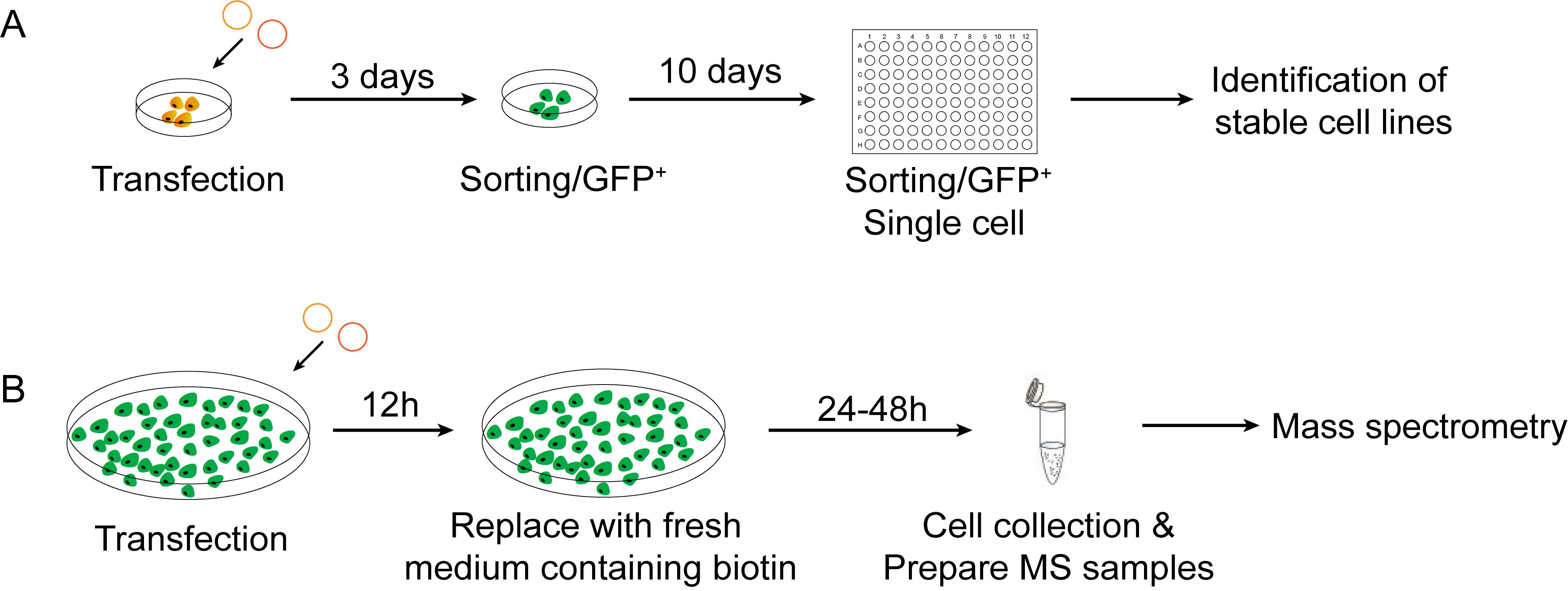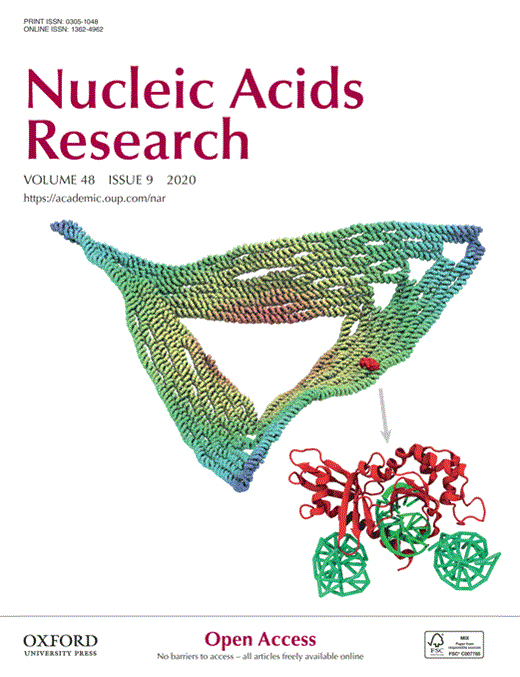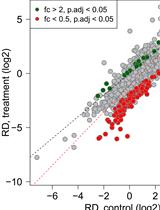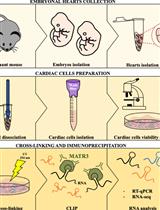- EN - English
- CN - 中文
A New Method for Studying RNA-binding Proteins on Specific RNAs
一种研究特异性RNA结合蛋白的新方法
(*contributed equally to this work) 发布: 2021年05月20日第11卷第10期 DOI: 10.21769/BioProtoc.4022 浏览次数: 10498
评审: Anonymous reviewer(s)
Abstract
Proximity-based protein labeling has been developed to identify protein-nucleic acid interactions. We have reported a novel method termed CRUIS (CRISPR-based RNA-United Interacting System), which captures RNA-protein interactions in living cells by combining the RNA-binding capacity of CRISPR/Cas13 and the proximity-tagging activity of PUP-IT. Enzymatically deactivated Cas13a (dCas13a) is fused to the proximity labeling enzyme PafA. In the presence of a guide RNA, dCas13a binds specific target RNA region, while the fused PafA mediates the labeling of biotin-tagged Pup on proximal proteins. The labeled proteins can be enriched by streptavidin pull-down and identified by mass spectrometry. Here we describe the general procedure for capturing RNA-protein interactions using this method.
Keywords: Proximity-based protein labeling (临近蛋白标记)Background
RNA-binding proteins (RBPs) play important roles in regulating cellular processes and function. Mapping RNA-protein interactions is a key endeavor to address how proteins regulate the location and function of target RNAs. The traditional methods are mostly protein-centric methods, including RNA immunoprecipitation (RIP) and crosslinking and immunoprecipitation (CLIP). They rely on specific antibodies to immunoprecipitate RNA-protein complexes and identify the RNAs by sequencing. Although some RNA-centric methods have been developed, they focused on systematic labeling of all RNAs, rather than one specific RNA, for the purification of RNA-protein complexes (Chu et al., 2015; McHugh et al., 2015). Therefore, there is an urgent need to develop a method that can be widely used to study RNA-protein interactions of the specific RNA in living cells. Since the CRISPR-based RNA-targeting Cas nucleases have been reported, it provides us a new powerful tool to bind and cleave specific RNAs to regulate RNA function (Abudayyeh et al., 2016; Cox et al., 2017). In addition, the enzymatically deactivated Cas13a provides a new strategy for tracking the specific RNA. The proximity labeling system PUP-IT has been widely used to identify protein-protein interactions. It employs the proximity ligase PafA to mediate the ligation of a small protein (PupE) to lysines on the surrounding proteins (Liu et al., 2018). Combining PUP-IT with the RNA-targeting Cas nucleases (Figure 1), we have developed a new class of RNA-centric methods for studying RNA-protein interactions in living cells (Zhang et al., 2020).

Figure 1. The workflow of capturing RNA-protein interactions. A. The workflow for isolating HEK293T cell line stably expressing CRUIS. B. The workflow of mass spectrometry sample preparation.
Materials and Reagents
Pipette tips (Filtered) (Thermo, catalog numbers: TF112-1000-Q, T104RS-Q, TF140-200-Q)
0.2 ml PCR tubes (Thermo, catalog number: 431-MIXED-Q)
1.5 ml Microtubes (AXYGEN, catalog number: MCT-150-L-C)
50 ml Tubes (Falcon, catalog number: 352098)
96-well plates (Corning, catalog number: 3599)
24-well plates (Corning, catalog number: 3524-ND)
6-well plates (Corning, catalog number: 3516)
10 cm dishes (Corning, catalog number: 430167)
pC0040-LwaCas13a crRNA backbone (Addgene, catalog number: 103851)
pB-CAGGS-dCas9 (Addgene, catalog number: 110823)
Super PiggyBac Transposase (SBI, catalog number: PB210PA-1)
DMEM (Life, catalog number: C11995500CP)
FBS (Gemini, catalog number: 100-307)
Penicillin-Streptomycin (Life, catalog number: 15140122)
Opti-MEM (Gibco, catalog number: 31985062)
PEI (Polysciences, catalog number: 23966)
PBS (Life, catalog number: C20012500CP)
0.25% Trypsin-EDTA (Life, catalog number: 25200072)
Biotin (SCRC, catalog number: 67000260)
Triton® X-100 (Sangon Biotech, catalog number: T0694-100 ml)
1 M Tris pH 7.5, sterile (Sangon Biotech, catalog number: B548127-0500)
100× protease inhibitor cocktail (Biotool, catalog number: B14001)
Urea (Sangon Biotech, catalog number: UT0907)
DTT (MDBio, catalog number: D023-5G)
Iodoacetamide (SIGMA, catalog number: I1149-5G)
Streptavidin magnetic beads (PIERCE, catalog number: 88816)
1 M Tris pH 8.0, sterile (Sangon Biotech, catalog number: B548127-0500)
NaCl (Sangon Biotech, catalog number: A501218-0001)
SDS (MDBio, catalog number: S001-100)
EDTA (Sangon Biotech, catalog number: E0105-500g)
Ammonium bicarbonate reagent plus(R) (Sigma, catalog number: A6141-500G)
RapiGest SF (Waters, catalog number: 186008090)
Sequencing Grade Modified Trypsin (Promega, catalog number: V5113)
Formic acid (Sigma, catalog number: 94318-250ML)
Acetonitrile (Merck Chemicals, catalog number: 1.00030.4008)
Trifluoroacetic acid LC-MC Ultra (Sigma, catalog number: 14264-50ML)
Amino acid sequence information of CRUIS and Bio-PupE are available at https://doi.org/10.1093/nar/gkaa143
ZIPTIP C18 (Millipore,catalog number: ZTC18S960)
Anti-myc antibody (Cell Signaling, catalog number: 2276s)
Goat anti-mouse IgG Antibody (H&L) [HRP] (GenScript, catalog number: A00160)
Streptavidin-HRP (Cell Signaling, catalog number: 3999s)
BSA (AMRESCO, catalog number: 0903-5G)
SurePAGE (GenScript, catalog number: M00657)
PVDF Western blotting membranes (Roche, catalog number: 30100400)
BbsI-HF (NEB, catalog number: R3539)
Lysis buffer (see Recipes)
Buffer 1 (see Recipes)
Buffer 2 (see Recipes)
Buffer 3 (see Recipes)
Buffer 4 (see Recipes)
Equipment
Standard molecular biology lab equipment
Eppendorf mixer (Eppendorf, catalog number: 5382000074)
Magnetic separator(Bimake, catalog number: B23803)
-80°C freezer (Therom, catalog number: 905)
FACSAriaTM III (BD)
Trans-blot turbo (Biorad, catalog number: 1704150)
Chemiluminescence imaging system (GE, Amersham Imager 600)
Vacuum concentrator (Thermo, SpeedVac)
Spectrometer (Thermo, Orbitrap Fusion)
Procedure
文章信息
版权信息
© 2021 The Authors; exclusive licensee Bio-protocol LLC.
如何引用
Sun, W., Zhang, Z., Liu, J. and Zhuang, M. (2021). A New Method for Studying RNA-binding Proteins on Specific RNAs. Bio-protocol 11(10): e4022. DOI: 10.21769/BioProtoc.4022.
分类
分子生物学 > RNA > RNA-蛋白质相互作用
神经科学 > 细胞机理
生物化学 > 蛋白质 > 标记
您对这篇实验方法有问题吗?
在此处发布您的问题,我们将邀请本文作者来回答。同时,我们会将您的问题发布到Bio-protocol Exchange,以便寻求社区成员的帮助。
Share
Bluesky
X
Copy link












